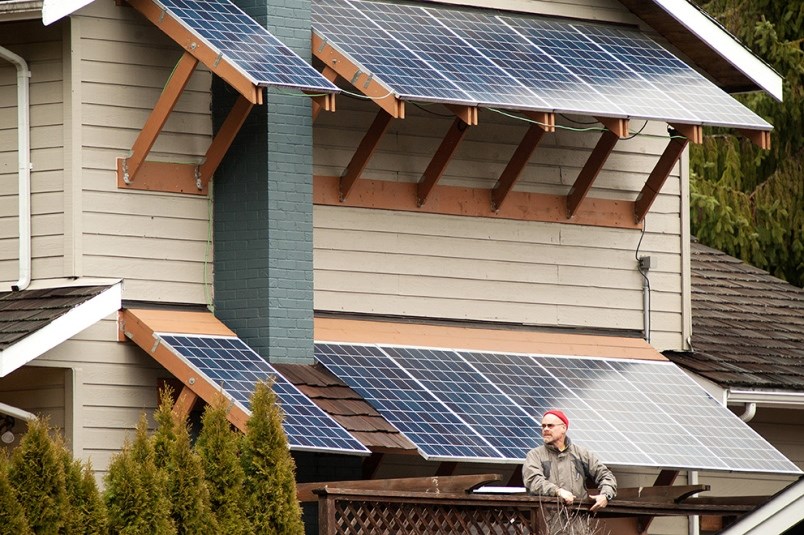When we installed solar panels on our home in 2016, many thought we were crazy. They asked how solar could work in a town like Squamish that gets more than 2,000 millimetres of rain a year.
We had been the first to install solar photovoltaic panels on our home as part of the BC Hydro-Net Metering program.
At the time, costs averaged $3.50 per watt for a solar photovoltaic system to offset the more expensive BC Hydro Step 2 power.
A number of Squamish solar installations have gone in since and now, costs are approaching $2.50 per watt which puts the price tag for a 5kW system at $12,500 with an estimated payback period of 12 years — assuming the 10-year average BC Hydro rate increase of 5 per cent per year.
But given the lack of any solar incentive programs in B.C., is there a way to cut the solar costs further?
Turns out the answer isn’t far away. One only has to look across the water to one very successful solar co-operative.
In a nutshell, a co-op is a group of community members that work together on a project and the Salish Sea Renewable Energy Co-op on the Gulf Islands decided that organizing a solar bulk buying program was worth the effort.
So why solar?
A slide at a presentation on their efforts by Galiano Island resident and one of the co-op’s founders, Tom Mommsen explained it:
“Solar PV energy is recognized globally as the best solution to energy security and reduced greenhouse gas emissions for many reasons. It is environmentally friendly, with 7 to 20 times less greenhouse gas emissions than supposedly ‘clean’ hydro mega dams, it keeps valuable energy dollars in the community, is very cost competitive, contributes to energy security by decentralizing the sources of power and creates local expertise, employment, and economic benefits.”
Mommsen said the group had done an ad-hoc community purchase of 330 solar panels in 2015 and wanted to create a formal framework so that we could also do advocacy work as well as organize a much larger bulk buy that included the other Gulf Islands.
Mommsen and four other volunteers gave talks on Galiano, Mayne, Pender, Saturna and Saltspring Islands. Their next bulk buy in 2018 was much larger, easily surpassing the threshold of 700 solar panels to fill a shipping container. Using a list of 80 interested home and business owners, Mommsen and the co-op have so far orchestrated the installation of more than 800 solar panels in approximately 40 new installations, producing more than 250 kilowatts of power.
Today, the co-op has 54 members and every system is grid-tied through the BC Hydro-Net Metering Program allowing participants of feed excess solar power into the grid. This negates the need for an expensive battery backup system. The feedback has been very positive, Mommsen says. The co-op continues to receive inquiries and has planned another solar panel bulk buy for 2019.
A 10 kW system generates 10,000-kilowatt hours of electricity per year and is enough to meet the power demand of the average B.C. home.
Would a solar cooperative work in Squamish?
Since becoming the fifth Canadian Solar City in 2016, 10 solar systems have been installed around town, the biggest of which is 168 panels (50 kW) on the roof of Diamond Head Motors.
A Squamish solar co-op will take work by a number of community members but the benefits are obvious.
Matt Blackman is the founder of the Squamish Alternative Energy Group.



